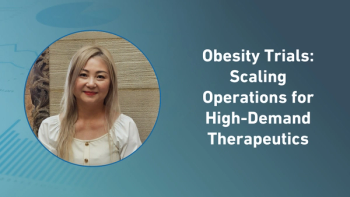
IRT Bridges Clinical and Supply Together—and Why It Matters
4G Clinical head of marketing, Amy Ripston interviews Catherine Hall, director of operational excellence, at Sunovion to discuss how IRT bridges the gap between clinical and supply, and how interactive response technologies (IRT) can be leveraged to enable innovative trial designs.
Amy Ripston: In your experience, how is IRT the bridge between clinical and supply?
Catherine Hall: The concept of IRT started in the clinical world to assign randomization to a patient. This simple application of a centralized system to conduct randomization of patients truly enabled the ability of a clinical trial to adopt a central randomization paradigm. Clinical sees the IRT as where the patients are randomized at an investigator site. Because of this it made sense to have IRT managed within clinical, under GCP regulations. Drug supply, on the other hand, looks at the IRT with respect to controlling the flow of drug (follows GMP). Neither group sees how they are critically linked in the eyes of a regulator.
However, once we introduced central randomization, it was no longer possible to keep track of what drug was sent to what patient, and the use of IRT quickly expanded to assignment of drug as well as randomization. This is a great example of how a clinical decision (study design) had helped to drive innovation in drug supply.
AR: Did that innovation in drug supply (GMP) impact clinical (GCP)?
CH: Absolutely. With a central system to manage drug supply, the ability to orchestrate more complex clinical trial designs became possible. The problem is that neither drug supply or clinical truly understands the impact they have had on each other and the central role that IRT played.
AR: How so?
CH: The industry is very siloed, everyone is heads down focused on their specific responsibilities and don’t realize the “why” behind shifts in trial designs, etc. Once the IRT started having the power to manage drug supply, this shift enabled clinical to use adaptive designs. The IRT was the key that literally opened doors of how we can design clinical trials-all because of the interrelationship it has with drug supply. It works conversely as well. New changes in clinical design enabled new innovations in drug supply management-which is why we now have pooling. And it’s really because of this technology that bridges the two worlds of GCP and GMP.
Historically, IRT is either owned by clinical or supply. Neither group has a conscious history of the impacts it has on the other.
AR: What would the benefit be to the industry if clinical and supply groups realize the historical impacts they have had on each other through the IRT?
CH: I do not think that today we are taking full advantage of what the IRT offers. If both groups were to equally own it, and really take a moment to understand the interrelationship and potential, I think we would see the next breakthrough in trial design.
I think you would also see breakthroughs in how clinical trial data is managed. Right now, supply chain heavily relies on the IRT for their reports; it’s a tool to understand the flow of drug. If you ask a clinical operations person where they go for updates on their clinical trial, most of the time it will be their Clinical Trial Management System (CTMS). What they don’t realize is it’s the IRT that feeds the data to the CTMS that subsequently gets reconciled in Electronic Data Capture (EDC). All the data on number of patients screened, randomization, etc.-it’s already in the IRT! The IRT is really the cornerstone for trial data. That’s a cultural hurdle though. The IRT’s role in the success of clinical trials has been historically minimized, which is unfortunate.
AR: Do you think that will change?
CH: It has to-especially given the changes in the International Conference on Harmonisation of Technical Requirements for Registration of Pharmaceuticals for Human Use (ICH E6). ICH E6 focuses on validated control of clinical systems and data. Authorities want to see all the version changes and understand the impact of any data changes on the trial. ICH E6 also references the concept of authoritative source vs. a certified copy. The industry needs to understand that the IRT is a source, not a copy.
It’s the IRT that performs emergency unblinding. It’s the IRT that houses critical data in the event of a recall. If the industry doesn’t take this system seriously, and how ICH E6 applies to this system, there could be consequences from an audit perspective.
AR: If you had a few key takeaways from this discussion for your industry peers, what would they be?
CH: One, realize the power of the IRT to influence/enable study design and drug supply innovation. There is so much data housed in the IRT that can help shape clinical programs-you don’t have to go searching in other systems.
Two, bring clinical and supply together to own the IRT-which is why I love that you use the term RTSM (randomization and trial supply management), since the term itself acknowledges the connection between clinical and supply.
Three, familiarize yourself with the ICH E6-and make sure you understand the flow of data and the regulations so you can ensure you are compliant.
This blog was prepared by Catherine Hall in her personal capacity. The opinions expressed in this blog are the author's own and do not reflect the view of Sunovion Pharmaceuticals Inc.
Catherine Hall is Director of Operational Excellence at Sunovion Pharmaceuticals.
Amy Ripston is
Newsletter
Stay current in clinical research with Applied Clinical Trials, providing expert insights, regulatory updates, and practical strategies for successful clinical trial design and execution.




